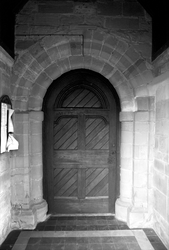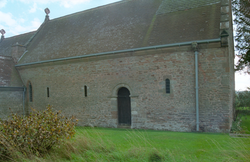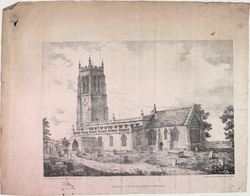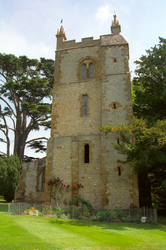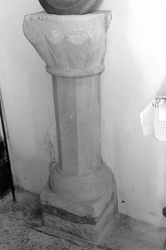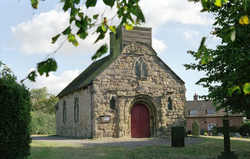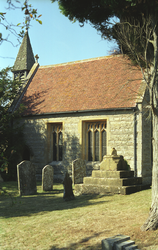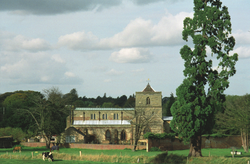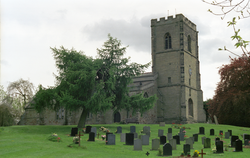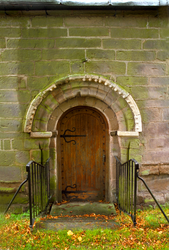
The Corpus of ROMANESQUE SCULPTURE in Britain & Ireland
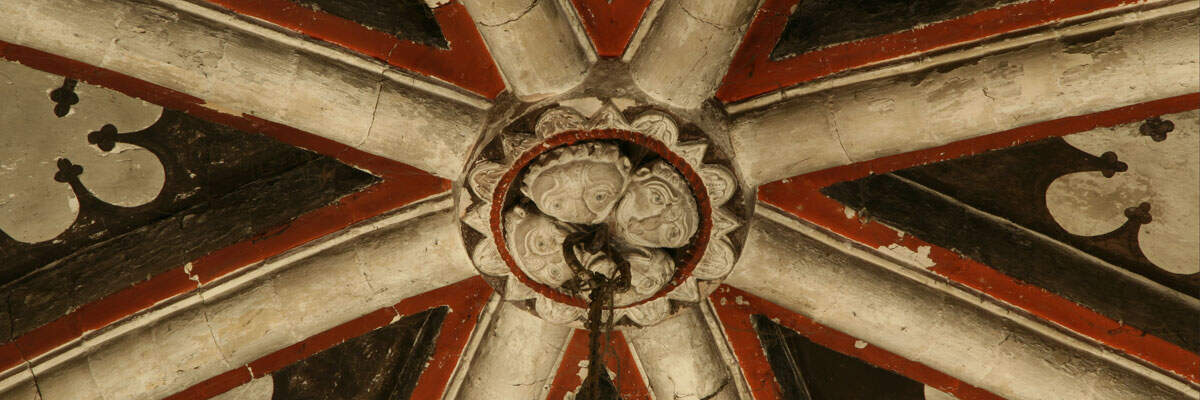
Warwickshire (now)
Parish church, former
This is a simple aisleless church with a tower, nave and chancel. The earliest part is S door and sections of nave wall. There is a modern porch with neo-Romanesque decoration.
Parish church
Preston Bagot is a small, dispersed village in the Stratford district of Warwickshire, 6 miles W of Warwick. The church is on the N side of the settlement and is built of grey limestone rubble. It consists of a nave with a W bell turret and S porch, and a chancel with a N vestry. The nave and chancel are largely 12thc, but the church was restored by J. A. Chatwin who lengthened the chancel, added the chancel arch, heightened the walls and added the timber bell-turret in 1878-79. The N nave wall retains its doorway and 3 plain lancets, all of the 12thc. The S doorway is also recorded here.
Parish church
Brailes is a village in the Sratford on Avon districty of S Warwickshire, 8 miles E of Banbury. The village is divided into Upper (E) and Lower (W) Brailes, and the church is on the N side of Lower Brailes High Street. It is a large church of coursed ironstone with a tall W tower, an aisled nave with a S porch, and a chancel with a N vestry. It is largely of 1325-72 with a 15thc tower, and was restored by William Smith from 1877-79. He rebuilt the chancel arch and the N aisle and clerestorey. The vestry was enlarged 1892-93. None of the fabric is Romanesque, but there is a section of an interesting carved shaft loose in the church.
Ruined parish church
All that remains of the church is the buttressed, three-stage 12thc. tower and part of the S transept including a 14thc. N arcade. The S transept was restored in 1835 for use as a mortuary chapel. The tower has a twin pointed bell-opening ofc.1200 (Pevsner refers to them asc.1200 twins.) on the highest stage of the W face with a shared mullion within a round-headed, chamfered arch. There is a round-headed window of two orders on the second stage and a further deeply splayed round-headed window set into a buttress on the S face, heavily restored. The only Romanesque sculpture is on the corbels supporting the tower arch.
Parish church
Mainly 18thc. and consisting of nave, chancel and a 13thc. W tower on S side of church. There is Herringbone work inside chancel N wall and outside chancel S wall, and a plain, flattened round arch but these may be 18thc. (Pevsner). Romanesque sculpture is found on the pillar piscina.
Parish church
Small church of 12thc. origin consisting of nave, chancel and weatherboarded bell-cote. The nave dates from about 1150, with more later alterations. The chancel was probably rebuilt in the 13thc., and the whole church restored in 1844 and again in 1908-9 by W.H. Bidlake. Bidlake appears to have removed the 13thc. windows and replaced them with seven 12thc. style windows, two each in N and S walls of nave and one each N and S walls of chancel and one in E. wall of chancel. All have nook shafts with scalloped capitals and arches with edge-roll and hollow label. The chancel arch in the Romanesque style is also by Bidlake. Surviving 12thc. features are the W doorway and part of the S doorway to the nave. The walls are of sandstone rubble masonry varying in colour from cream to buff with traces of iron, apart from the E and W elevations which are of buff sandstone ashlar.
Parish church
b'\nSmall church of undivided chancel and nave with S chapel. The chancel was probably a 13thc. lengthening of the 12thc. building. A S porch and bell-turret are probably of the 1881 restoration. The S doorway is 12thc. as is the blocked N doorway. Much of the walling masonry is of the local whitish-grey lias limestone.\n'
Parish church
A large church with a two-aisled nave, chancel, transepts and crossing tower. The S doorway and parts of the crossing are 12thc. as are two small, plain, splayed, clerestory window openings, one above each transept arch. The present church dates from the 12thc. when it probably consisted of a chancel, nave, S transept and a low central tower. The N. transept was added in the early 13thc. In the 14thc. the church was rebuilt with the addition of aisles. In the 17thc. the low tower was raised to form a belfry. Of the 12thc. church, the tower crossing remains, with the 13thc. arch to the N transept and the N doorway reused in the 14thc. S aisle.
Parish church
The church consists of chancel, nave, N and S
aisles, W tower and S porch. The reset S doorway is
all that survives from the 12thc.
Parish church
A two aisled church with a late 14thc. tower. The chancel is basically 12thc., but the S windows have been replaced and two on the N side of the chancel have been blocked. There are remains of the upper part of a large round arch over a later window in the E wall of the S aisle. Romanesque sculpture survives on the doorway to the N aisle. There is a badly eroded font which could be 12thc. and is therefore included.
